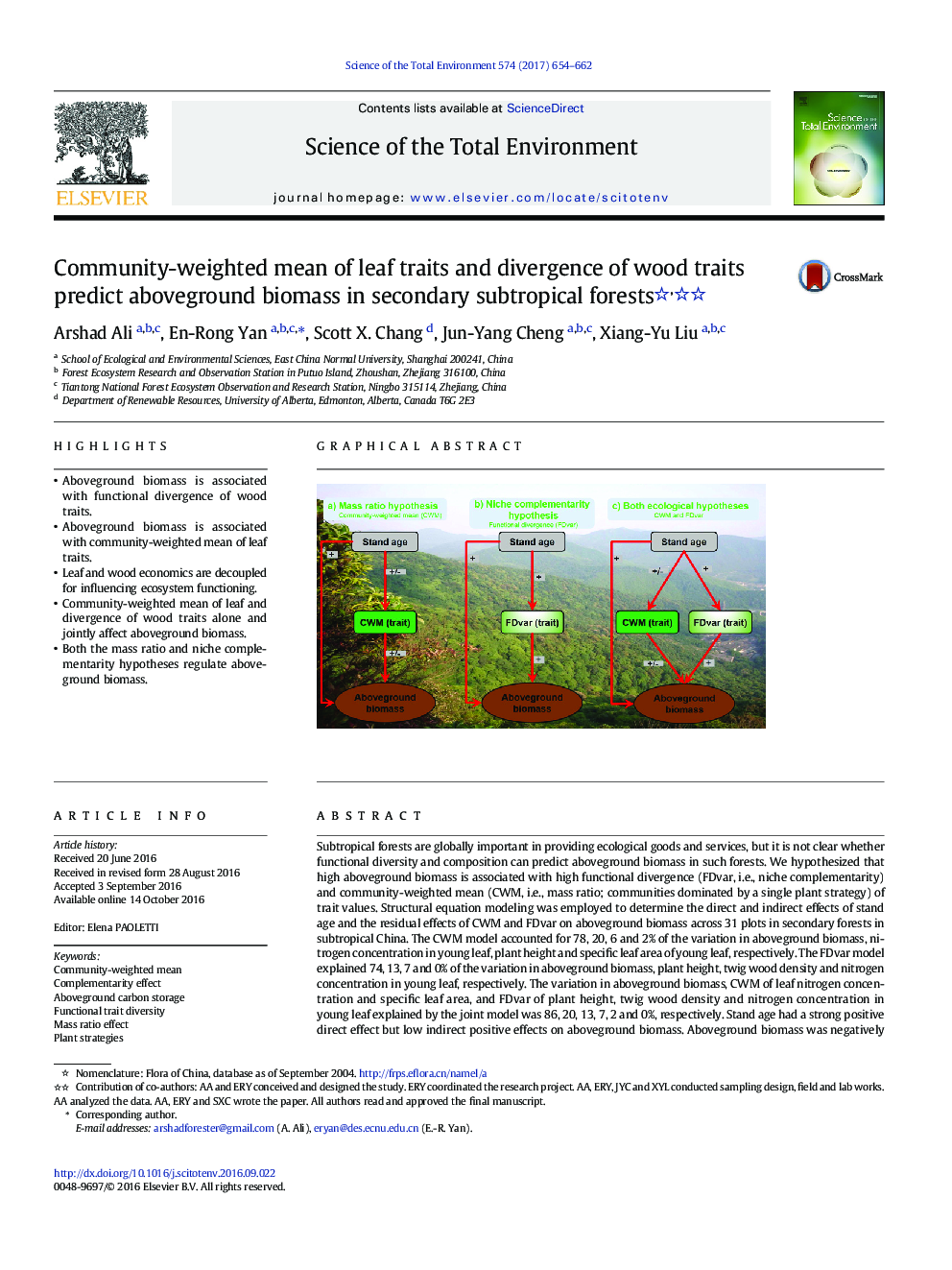| Article ID | Journal | Published Year | Pages | File Type |
|---|---|---|---|---|
| 6320280 | Science of The Total Environment | 2017 | 9 Pages |
â¢Aboveground biomass is associated with functional divergence of wood traits.â¢Aboveground biomass is associated with community-weighted mean of leaf traits.â¢Leaf and wood economics are decoupled for influencing ecosystem functioning.â¢Community-weighted mean of leaf and divergence of wood traits alone and jointly affect aboveground biomass.â¢Both the mass ratio and niche complementarity hypotheses regulate aboveground biomass.
Subtropical forests are globally important in providing ecological goods and services, but it is not clear whether functional diversity and composition can predict aboveground biomass in such forests. We hypothesized that high aboveground biomass is associated with high functional divergence (FDvar, i.e., niche complementarity) and community-weighted mean (CWM, i.e., mass ratio; communities dominated by a single plant strategy) of trait values. Structural equation modeling was employed to determine the direct and indirect effects of stand age and the residual effects of CWM and FDvar on aboveground biomass across 31 plots in secondary forests in subtropical China. The CWM model accounted for 78, 20, 6 and 2% of the variation in aboveground biomass, nitrogen concentration in young leaf, plant height and specific leaf area of young leaf, respectively. The FDvar model explained 74, 13, 7 and 0% of the variation in aboveground biomass, plant height, twig wood density and nitrogen concentration in young leaf, respectively. The variation in aboveground biomass, CWM of leaf nitrogen concentration and specific leaf area, and FDvar of plant height, twig wood density and nitrogen concentration in young leaf explained by the joint model was 86, 20, 13, 7, 2 and 0%, respectively. Stand age had a strong positive direct effect but low indirect positive effects on aboveground biomass. Aboveground biomass was negatively related to CWM of nitrogen concentration in young leaf, but positively related to CWM of specific leaf area of young leaf and plant height, and FDvar of plant height, twig wood density and nitrogen concentration in young leaf. Leaf and wood economics spectra are decoupled in regulating the functionality of forests, communities with diverse species but high nitrogen conservative and light acquisitive strategies result in high aboveground biomass, and hence, supporting both the mass ratio and niche complementarity hypotheses in secondary subtropical forests.
Graphical abstractDownload high-res image (682KB)Download full-size image
